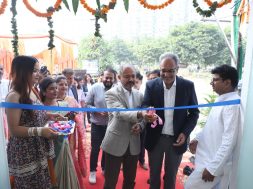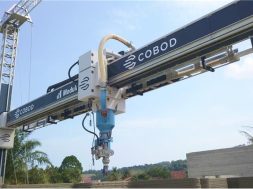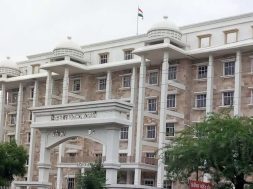Green building: A vital option for smart city
“Green and sustainable practices in new and existing buildings will minimise the exploitation of natural resources and will make responsible communities for a better tomorrow,” says Mala Singh, Founder and Chairperson, PEC Greening India
Mumbai-based PEC Greening India is working on the mission of encouraging responsible green building development which will lead to a better tomorrow. In an interview with ACE Update, Mala Singh, Founder and Chairperson of the company gives an overview of this movement. Also, being the National Board Committee Member at IGBC and Co-Chairman of IGBC GRS Rating, she explains the key points of newly established IGBC Green Residential Society Rating system for multi-dwelling communities.
India has three primary green building rating systems namely IGBC, GRIHA and LEED. How important are these ratings systems? Do they have a right approach to sustainability?
We have various rating systems like IGBC, GRIHA and LEED in our country to promote green buildings. Being a national board committee member of Indian Green Building Council (IGBC) and Co-Chairman of Green Residential Society Rating System, I would like to share the progress of green building movement through efforts of IGBC and its associated stakeholders throughout the country. Starting from a journey of 20,000 sq.ft. project at CII office, Hyderabad, the first platinum-rated building in India, a tremendous growth has been established in this direction. More than 3 bn sq.ft. construction footprint are going green today.
IGBC rating systems are versatile in nature and having different approach for each category of project. It is compatible with local legal bye-laws as well as in line with our climatic conditions and social requirements. IGBC rating systems are available for all kind of new and existing developments both covering residential, commercial, townships, schools, metros, factories etc.
IGBC Green Residential Society Rating system for multi-dwelling communities is a new rating system which will help to assess current green and sustainable practices in action on ground and also will help to encourage the use of green practices and sustainable technologies for existing developments.
What are the criteria on which one should judge whether a building is green or not?
To assess whether a building is green in true sense, its performance needs to be quantified based on important criteria such as sustainable site planning and management; water efficiency and management; energy conservation and management; use of sustainable building materials and resources; solid waste management based on 3R principle; and indoor environmental quality.
Most cost-effective steps towards reduction in a building’s energy consumption usually occur during the design process. What should be the perfect design of a green building?
A green building is designed by a team of experts consisting of green architects, sustainability engineers, energy and waste management experts. To design and develop a green building, a conscious approach is adopted right from the planning level till the end of building lifecycle to conserve natural resources like water, energy and various other valuable resources.
A perfect design of a green building involves undertaking effective design measures and sustainable strategies during planning itself which helps in achieving long-term efficiency and set sustainability goals.
For energy efficient green building, incorporating climate responsive building design strategies in design stage itself is vital. By incorporating efficient measures in the design, the targeted building energy consumption can be lesser than the standard energy requirements. A perfect design for an energy efficient green building begins with the analysis of the macro- and micro-climatic conditions including solar, wind, vegetation, soil, and water, etc. Further on optimum active and passive strategies should be incorporated into the building design for harnessing the same at the site, building and building components scale.
Passive strategies as per climate and site conditions like the building orientation, building envelope, shading devices, window wall ratio, natural ventilation, daylight, evaporative cooling, earth tube cooling, sun spaces, etc, are cost effective steps to reduce the building energy demand and consumption.
Active systems like HVAC system, lighting systems, equipments should be designed based on the reduced energy demand arising from passive strategies. Efficient HVAC systems based on their COP, lighting fixtures to achieve reduced LPD, star-rated equipment should be proposed in the project. Incorporation of renewable energy systems in the building design help to reduce energy demand at a larger level depending on the capacity of the system proposed. An effective building maintenance and automation systems should be in place to monitor the performance of energy systems that helps to reduce overall energy consumption. The capital cost involved in these systems can be recovered through direct savings achieved.
What kinds of incentives the government is offering to green buildings?
Realising the great potential involved with creation of green and sustainable buildings, some of the states have already taken initiative to promote green by providing incentives to the developers and tax rebate to the property owners. For instance, 5 per cent extra FSI is given by Noida, Jaipur and Punjab while West Bengal government gives 10 per cent extra FSI to the developers. Even at corporation level, local government authorities are offering incentives or property tax rebates to encourage the housing societies to undertake green initiatives. For instance, Thane Municipal Corporation offers 10 per cent rebate in property tax for housing societies for undertaking green initiative like rainwater harvesting and solar water heater. Even, Pune Municipal Corporation offers 10 per cent rebate in property tax for housing societies undertaking initiatives like solid waste management, wet composting, solar power generation and rainwater harvesting. Currently, Maharashtra government is proposing to provide 2-7 per cent property tax rebate in green buildings which will be crucial to boost the green building movement in Maharashtra. Such initiatives will help to create more demand for green and sustainable developments.
What are the challenges to build a green building and how can we overcome those?
Considering India’s green building sector, despite tremendous growth that has occurred in the past few years, it is yet to be caught up in the pace of mainstream construction. In fact, constructing green buildings continues to remain a voluntary initiative by developers owing to the lack of proper green policies set forth by the government, with the existing policies failing to get implemented effectively. In India we have no specific green building code mandatory. India is driven more by the aspirations of private companies than legislations set by the government. However, worldwide green building mandate has been given a lot of importance through their government initiative to the stakeholders.
There also arises the need to provide a boost from demand side which is possible only by eradicating the common misconception that green buildings are costly. Majority of the people are still ignorant of green building concept and its holistic benefits. Also incorporating policy schemes and incentives like property tax rebates to tenants at municipal or state level, will further improve the market demand for green buildings from demand side. I hope the smart city agenda of government will also boost green building movement in the country.
How is “PEC Greening India” playing its role in promoting or developing green buildings in India?
Our mission is to support climate change mission which covers all components in-built like creation of green and sustainable habitats by promoting green buildings and smart cities, to achieve energy efficiency by promoting energy efficiency products and technologies, use of renewable energy to reduce conventional energy demand, water efficiency by promoting water efficient technologies and products, promote waste management strategies and technologies and enhance green cover by promoting biodiversity. Green and sustainable practices in new and existing buildings will minimise the exploitation of natural resources and will make responsible communities for a better tomorrow.
18
Cookie Consent
We use cookies to personalize your experience. By continuing to visit this website you agree to our Terms & Conditions, Privacy Policy and Cookie Policy.






